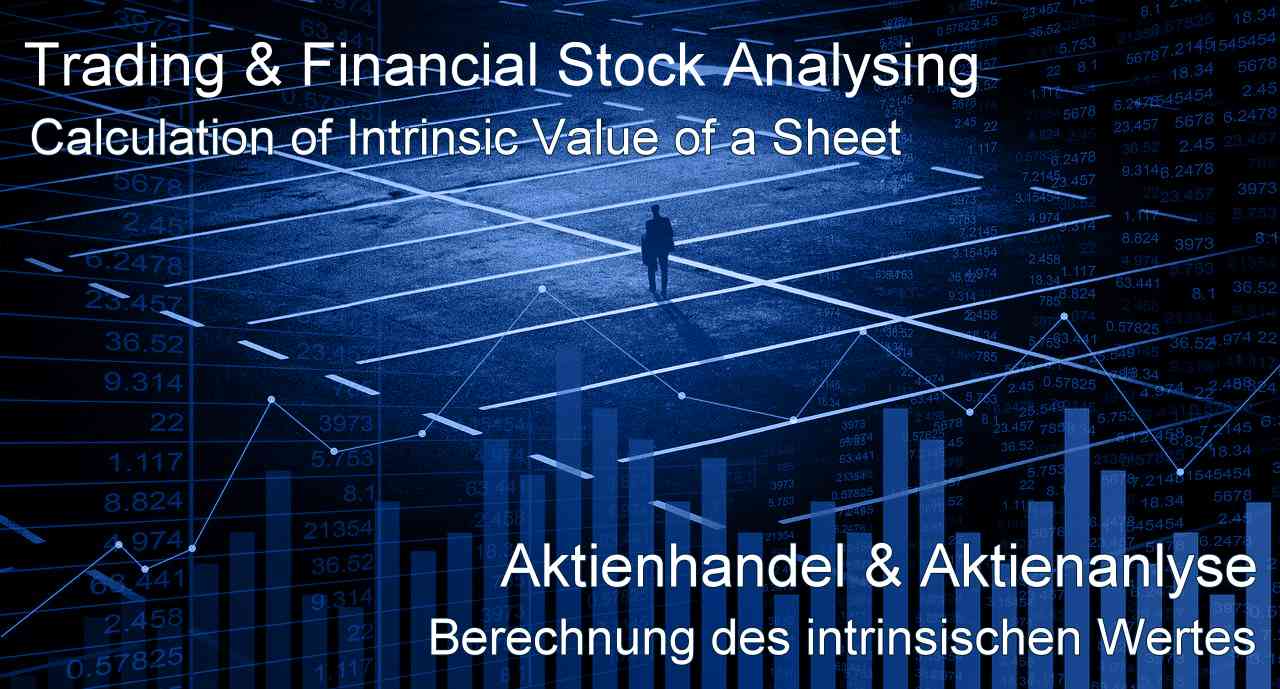Calculate Intrinsic Share Values Instantly With our Calculators - Calculate Now
Calculate Intrinsic Share Values Instantly With Calc2Web Stock Calculators
An asset such as a stock has an intrinsic value outside external factors. Any experienced investor will tell you that these factors influence a stock. This includes the economy's condition, unemployment rates, latest GDP numbers, and even political tweets!
The intrinsic value of a stock is minus these factors. It boils down to the value of a company on its own merits. Internal influences such as brand strength, management, and product efficacy determine this value.
This is important since investors focus on cash available to stockholders. The factors mentioned above determine the amount a company can generate and its future growth. We can say that intrinsic value is a general term used by financial analysts who attempt to estimate it using technical and fundamental analysis.
The concept was popularized by Benjamin Graham, who was also a mentor and teacher to Warren Buffet. He is considered the father of modern value investing and has authored two books: Security Analysis and The Smart Investor.
There is no common standard for this calculation, but financial analysts build valuation models based on different aspects of an organization.
These include:
- Qualitative factors
Qualitative factors include evaluations of financial statements, ratios, and other factors that determine business performance. - Perceptual factors
Perceptual factors refer to the investor perceptions of an asset's value which are determined via technical analysis.
Calculate the real company value especially for traders and financial experts
Find out the intrinsic value of a share by building your own efficient mathematical model or calculator through this site. While estimations may be subjective, you can come to a fair estimation by comparing the asset\'s intrinsic value with its existing market price. It will help you determine whether it is under or overvalued.
Some investors may focus more on a company's management team, while others may see earnings and revenue as the primary standards. For instance, if an organization has a steady revenue stream but violates laws, its stock price may dip. A financial analyst can analyze their financials to determine whether the company is undervalued.
The Value of Undervalued Stocks
The price of undervalued stocks has a higher chance of rising over time. There are two stages involved in this:
Leveling with intrinsic value
In this stage, the market realizes that a share or stock is undervalued, increasing the number of buyers. This will automatically lead to a price increase until the market and intrinsic prices are the same.
Moving towards overvaluation
The price of undervalued stocks increases till it is the same as its intrinsic value. In this case, the stock's momentum takes the price beyond intrinsic levels and starts to become overvalued.
As a potential investor, you should aim to pinpoint undervalued stock and buy it for less. These have greater potential to give great returns. Use Calc2Web to determine those values instantly.
Calculating Intrinsic Value
There are two ways you can use to risk adjust intrinsic value:1. Discounted Cash Flow (DCF)
You can calculate Discounted Cash Flow (DCF) to determine the intrinsic value of an asset or investment. For instance, to determine the value of a publicly-traded company using a DCF model, you need:
There are several ways to figure out the imminent cash flows of a company. In general, you need to focus on the cash flows of the past 12 months to determine a tentative growth rate to project future cash flows. Even small changes can have a significant impact on this valuation.
For instance, keep in mind that a rapidly growing company will continue to grow at above-average rates for longer.
Remember that the intrinsic value is susceptible to the discount rate you choose. The lower it is, the higher the valuation. However, many will rate the discount rate high depending on risk factors in a business. It is an art and a science, but the Calc2Web calculator can help you determine accurate estimations.
Image Text: Invest or sell Alt-Text: An iPad with two pencils Description: A smart device with clipsTo calculate the intrinsic value of a stock, you need to divide the value of the business by the number of outstanding company shares in the market. That stock value is compared with the market price. It allows investors to determine if it is trading above, equal to, or below the intrinsic value.
If you think a stock is undervalued, you should purchase it at its intrinsic value expecting its price to increase. If it does, you profit. Most investors hold onto stocks till it reaches this value and use the money they earn from the sale to reinvest in other undervalued stock. This way, they get a steady cash flow and a more robust portfolio. Make that easier to manage with state-of-the-art intrinsic value Calc2Web calculators.For example, say you discover a company that you believe has potential to generate cash flow smoothly and it trades at $10 for a share. After determining its DCF, you find out that figure is a bit inaccurate and the shares can go for $15 apiece - a profit of $5. So let's say 35% is your safety margin - in that case you will buy the stock at $10 so if its intrinsic value reduces by $3 after a year, you can still save $2 from the original discount cash flow value and sell high even when the price drops.
Here is a simple formula you can use for this method:
Intrinsic value = (CF1)/(1 + r)^1 + (CF2)/(1 + r)^2 + (CF3)/(1 + r)^3 + ... + (CFn)/(1 + r)^n
2. Certainty Factor
Besides DCF, you can also use certainty factor to risk adjust intrinsic value. The method was popularized by Warren Buffet. In this method, you need to use a factor from 0 to 100 certainty of cash flows manifesting in a forecast.Assign a certainty factor to each of your cashflows or multiply it against the whole net present value of the organization. Make sure to use only risk free rates as the discount rates.
Both of these methods can be used to discount an investment as per their risk levels.
The intrinsic value is only one factor that determines the value of a stock! Before buying or selling your share, you should consider a range of other factors.
Create Your Own Online Calculator!
No need to remember complex formulas when you can build your own online calculator. You won't need a programmer to integrate it into your home page. Calculate the intrinsic value of a share using our readymade calculator or build your own.Similar Calculator Topics: Finances, Money, Assets, Shares, Securities, Stock market, Stocks, Capital, Companies, Analysis, Markets


